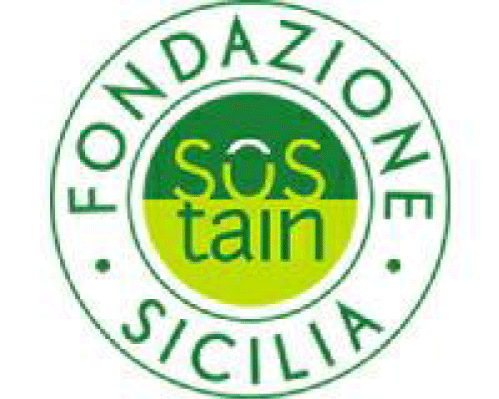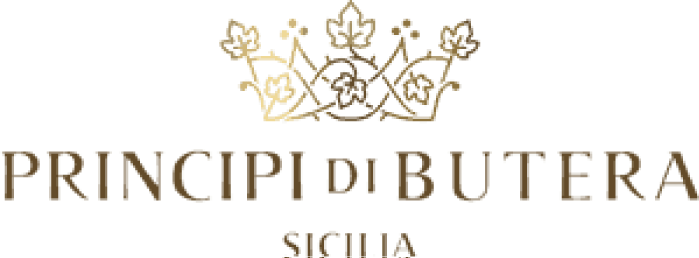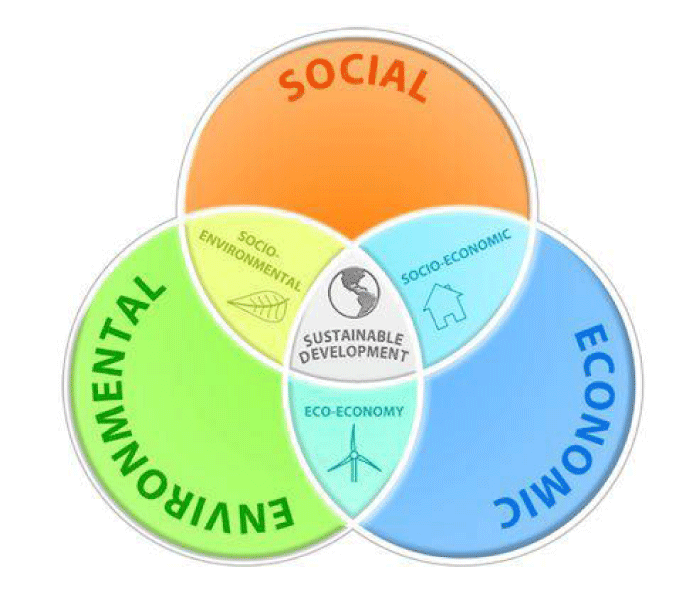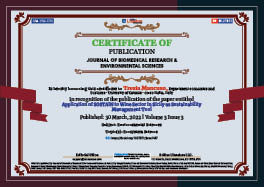Environmental Sciences . 2022 March 30;3(3):302-306. doi: 10.37871/jbres1437.
Application of SOSTAIN to Wine Sector in Sicily as Sustainability Management Tool
Tresia Mancuso1,3*, Sergio Arfo1, Marco Di Mauro1, Agata Matarazzo1, Antonio Paolo Froio2 and Alessandro Scuderi3
2Principi Di Butera – Contrada Deliella – 93011- Butera (CL), Italy
3Department of Agriculture, Food and Environment, University of Catania, Via S. Sofa, Catania, Italy
- Sustainability
- Wine sector
- LCA
- SOSTAIN
- Green economy
Abstract
Sustainability is a concept that affects many sectors due to increased stakeholder pressure for both economic and political reasons. In 2010 “SOSTAIN” was born, the first sustainability protocol in this sector that allows you to know exactly the type of impact that the company has on the surrounding area and how to limit it based on the principle of Life Cycle Assessment. It is a protocol ready to open up too many local companies, whether they are producers of organic, biodynamic, natural, conventional wine and more; because what unites the actors of SOSTAIN is the desire to share agricultural best practices aimed at respecting the ecosystem and absolute transparency towards the consumer. The study that will be carried out will be to carry out a detailed analysis of costs and benefits to implement this protocol in Sicilian wineries, in particular “Principi di Butera” cellars are based in Butera (CL). The objective of the study is to support wineries towards a proactive perspective with an eye to a “greener” future, making sure that it undertakes to behave ethically and contribute to economic development, improving the quality of the wine at the same time.
Introduction
In 2009, in Sicily, SOSTAIN was born, the first sustainability program for Sicilian viticulture, developed as a path aimed at enriching and enhancing everything that lives around the production system, such as the land, the landscape, the flora and the fauna. Those who work and finally those who consume wine, with the aim of pursuing an environmentally friendly, socially fair and economically effective development. The SOSTAIN program lays its foundations on the LCA (Life Cycle Assessment) method, which evaluates a set of interactions that a product or service has with the environment and the environmental impact (positive or negative) that arises from these interactions, throughout the entire life cycle of the product [1].
In order for the applicant company to obtain SOSTAIN certification, compliance with 10 minimum requirements is expressly required, which guarantee scientific rigor, objectivity, accuracy, consistency, transparency to the sustainability program. Compliance with the minimum requirements will be verified and validated every two years by an independent certification body and the SOSTAIN brand accounts for the company's performance in terms of sustainability [2]. The purpose of this study is to emphasize the importance of the minimum requirements set by the program for the companies that join and that have an eye on continuous improvement in the sector in which they operate. The main purpose is to obtain, through the certification process, the sustainability mark. Furthermore, this project was designed to bring benefits both to the companies that join and to consumers. In fact, for companies it is a "launch" towards a wine sector that is becoming increasingly green, through the sharing of best practices aimed at respecting the ecosystem.
Objectives
The main objective of this study is to analyze the environmental sustainability through a benchmark the effectiveness of an integrated system, such as SOSTAIN, compared with other environmental certification protocols that instead focus on a single aspect of environmental sustainability in the cycle of life of a product/service, demonstrating its greater effectiveness [3]. In this context, after presenting the analysis tool, this tool is applied to the Principi di Butera company.
Outline of the work
This work is divided in three main parts:
- Selection of case studies: the Principi di Butera winery, leader in the wine production of the central part of the Sicily region, is described.
- The indicators foreseen in the SOSTAIN project are listed;
- In the last part of the paper, the environmental impacts inherent to the atmospheric pollution of the analyzed company obtained through the application of the carbon footprint in business processes are described [4].
Materials and Methods
Among the numerous sustainability initiatives and programs implemented in the Italian wine sector, SOSTAIN is the oldest. It was established in 2010 thanks to the initiative of the Principi di Butera winery, an important Sicilian winery both in terms of production volume and turnover, which has decided to adopt a sustainable approach in its path to be able to realize all the innovations and the necessary management changes.
This program is open to all wineries in the Sicilian territory, whether they are producers of organic, biodynamic, natural wine, from integrated viticulture and more.
SOSTAIN can represent an important instrument of competitiveness especially in foreign markets, giving the possibility of greater visibility to the Sicilian territory as a whole and to wineries, thus also becoming an effective tool for local development [5].
The program focuses on the three pillars of sustainability with the aim of promoting, evaluating and improving the environment, the eco-social and the entire wine chain that goes from the vineyard to the cellar [6].
The specification is based on 10 minimum requirements, which companies must comply with in order to obtain certification, by an independent third party, and the SOSTAIN brand from the SOSTAIN Sicilia Foundation.
Finally, with regard to performance indicators, companies are required to calculate, at the organization level, the indices proposed by the VIVA program (AIR, WATER, VINEYARD) and to satisfy the TERRITORY indicator [7].
The ten requirements of SOSTAIN have been taken into consideration as evaluation indices, which refer to the entire production chain, and not only, as the search for sustainability does not stop only at the cellar or the vineyard but must also take into account of the economic and social impacts. The ten basic requirements, applied at the “Principi di Butera” company, with the objective to obtain the certification will be explained below:
REQUIREMENT 1: V.I.V.A. sustainability
The companies adhering to SOSTAIN adopt the certification guidelines at the VIVA organization level, the sustainability program of the Ministry of the Environment, which requires the calculation of 4 indicators:
Air indicator (Carboon Footprint) which expresses the total greenhouse gas emissions generated by company activities, dividing them into direct emissions deriving and controllable by the company, indirect emissions due to company energy consumption and emissions generated by non-proprietary or non-proprietary sources controlled by the company.
Water Indicator (Water Footprint) expresses the volume of fresh water consumed for the production of a 0.75 l bottle of wine.
Vineyard Indicator evaluates agronomic management practices, from the use of pesticides, fertilizers, organic matter management, erosion phenomena and other activities that can affect biodiversity. “Principi di Butera” to limit the effects of global warming, uses the drip irrigation method, managed with the "VINTEL" digital forecasting program, a digital forecasting program that allows you to rationalize irrigation based on the forecasts of warming
Territory Indicator evaluates the consequences of company activities on the territory intended both as an environment and landscape to be protected and as a human community on which the social and economic consequences are verified. Finally, to mention, in terms of continuous improvement, artificial lakes have been created within the property to collect rainwater and thus make the company self-sufficient for any water requests, without hindering the aquifers.
REQUIREMENT 2: EIQ evaluation
Chemical weeding is not allowed and companies are required to carry out only treatments that have an impact on the environment, on the farmer and on the consumer equal to or less than that of organic. The assessment is carried out using an internationally recognized indicator (EIQ, Environmental Impact Quotient).
REQUIREMENT 3: Inebriation of the soil
The obligation of grassing, spontaneous or artificial, in all rows of the vineyard during the entire winter period, in order to counteract soil erosion.
In particular way, inside the company the fertilizations are of organic origin, in fact the uses of weeding on the whole company have been eliminated. The vineyards are protected from the European vine moth, with the natural method of sexual disorientation. Biological defense methods are adopted in the vineyard based on the use of living organisms to counter the spread of parasites on the vine. In fact, some wine processing waste, such as pomace, is also used to fertilize the land.
REQUIREMENT 4: The energy you need
The SOSTAIN program aims to promote the energy efficiency of winemaking processes, which involves the use of a maximum of 0.6 kWh / l of wine. In the energy sector, the company aims to be completely self-sufficient. In fact, there is a 97-kW photovoltaic system, capable of producing 44% of the single requirement.
Furthermore, the panels were positioned on the roofs of agricultural shelters or cellars to eliminate their visual impact and to preserve the landscape context.
REQUIREMENT 5: Lighter bottles also for the air
The average weight of the bottles used during the year must not exceed 485.8g / 0.75 l bottles.
REQUIREMENT 6: Grapes, people and skills as local as possible
It is required that 100% of the grapes, at least 80% of the employees and at least 50% of the services used are local resources.
REQUIREMENT 7: Measurement and protection of biodiversity
The OAB (Observatoire Agricole de la Biodiversité) protocol must be adopted to detect biodiversity within the vineyards.
REQUIREMENT 8: Environmentally friendly materials in the vineyard
Only recyclable or biodegradable materials can be used for the construction of the new SOSTAIN vineyards.
REQUIREMENT 9: Not just a badge
Clarity and transparency are at the heart of SOSTAIN’s vision for which an annual report containing the results achieved through the program must be drawn up and published.
REQUIREMENT 10: Safe wines
The lowest possible quantity of sulphites must be used (red wines: 100mg / l; white and rosé wines: 150mg / l; sweet reds: 170mg / l; sweet whites 220mg / l; sparkling wines 155mg / l).
Results and Discussion
Carbon is a measure that expresses in CO2 equivalent the total number of greenhouse gases directly or indirectly associated to a product, an organization or a service. In accordance with the Kyoto Protocol, greenhouse gases to be included are: Carbon Dioxide (CO2), Methane (CH4), Nitrogen Oxide (N2O), Hydrofluorocarbons (HFCs), Sulfur Hexafluoride (SF6) and Perfluorocarbons (PFCs). TCO2eq (tons of equivalent CO2) allows to express the greenhouse effect produced by these gases in reference to greenhouse effect produced by CO2 considered to be one. This tool is then used within Principles of Butera applying the first paragraph of the ISO14064 (2006) “Specification with guidance at the organization level for quantification and reporting of greenhouse gas emissions and removals” concerning the guidelines and principles for quantifying and accounting for greenhouse gas emissions. This is aimed at obtaining the Carbon Footprint value and drafting GHG emissions inventory. An inventory of greenhouse gas emissions divided into direct and indirect emissions is then drawn [8]. With regard to the type of direct greenhouse gas emissions, it refers to emissions from sources that are directly owned and controlled by organization. These are the greenhouse gas emissions from the installations present within its own organizational boundaries and due to the activities that take place directly within the company's boundaries. The type of indirect greenhouse gas emissions from energy consumption, on the other hand, concerns emissions from the use of electricity, steam and other sources of energy imported and consumed by the organization [9]. Indirect gas emissions as a result of the generation of electricity heat and steam [10]. It means non-biogenic emission due to fossil fuel consumption for the electricity then purchased by the company and used throughout the plant. Of the GHGs taken into account to ISO14064 (CO2, CH4, N2O, NF3, SF6 which added Hydrofluorocarbons and Perfluorocarbons and any other relevant GHGs) the only species found in the farm are the carbon dioxide (CO2), Methan (CH4) and nitrogen oxide (N2O). Because of the lack of information, it was not possible to proceed with calculations for each source, so they will be considered only some emission sources. Before it was researching the conversion factor for such GHGs in CO2 eq, the GWP (Global Warming potential), more specifically the GWP declined on a 100 years' time, called GWP 100, as required by the normative. The emissive sources present in the company's heat generation processes are the steam generator used in the production plant and the boiler heating offices. Both rely on the stationary burning of natural gas from which are issued CO2, CH4 e N2O. Before calculating natural gas emissions in CO2 equivalent, it was necessary to identify the emission factor of the various GHGs, obtained by ISPRA [11].
To obtain the emissions of the various GHGs expressed in CO2 equivalent, using the emissive factor first identified; you can use the Eqs. (1-3):
Emission from CO2 = Consumption natural gas* FE CO2/100 (1)
Emission from CH4 = Consumption natural gas* FE CH4/100 (2)
Emission from N2O = Consumption natural gas* FE N2O/100 (3)
Below are reported the annual emissions for each of two sources in the year 2019. With regard to alcohol fermentation, it can be said that a bottle of wine involves on average an emission of 1.83 kgC02 equivalent related to all the productive process; of that emission, 9% is due to fermentation processes. On this basis it was possible to derive a maximum emissive factor for fermentation processes in the winery. So, the emission factor for fermentation processes is 0.1647 expressed in kilograms of CO2 equivalent on bottle (kgCO2, eq/ bottle). This value is expressed in relation to the single bottle of wine produced with particular reference to the most popular wine format of 0.75l. The 99% of bottles produced from Butera Principles have a format from 0.75l. So are used the production values of general bottles of the year 2019. As for the company's electricity supply, national average emission factor is used. In addition, in electricity generation the only GHG of interest involved is carbon dioxide [12]. The required emission factor is the national average emission factor for electricity consumption (Eq. 4), compiled by ISPRA in the Report 303/2019.
Emission Factor (FE) National Electricity Consumption 2018 (gC02/kWh) = 284.8 (4)
It is then possible to take the calculation of the equivalent CO2 emissions expressed in tons (t) with data on the company's total electricity consumption (Eqs. 5-6). To obtain the equivalent CO2 emission, you will have to multiply the electricity consumption of the company for the factor of electric and multiply it to his time for its “global warming potential”
(GWP100, CO2): Emissions CO2, eq = electricity cons. ∗(FE) national el. consumption 2018* GWP100, CO2 (5)
Total company electricity (kWh) = 649267 CO2 emissions equivalent in tons (t) = 161.53 (6)
With regard to direct emissions, it is calculated how much CO2 equivalent expressed in terms of tons coming from the source of heat generation and of alcohol fermentation for an annual amount equal to 277.5. Instead, for indirect emissions category are approximately 161.5 tons of CO2. To conclude, “Principi di Butera” is positioned on a green road for a more sustainable future. In fact, the company uses practices to minimize the environmental impact [13,14].
In fact, as regards the waste from wine processing, they are reintroduced into the process. The pomace is used in the form of fertilizer, while the lees are transferred to the distillery for the production of alcohol.
Regarding soil and water management, innovative techniques are used to reduce CO2 emissions and to avoid excessive water consumption. For soil management, the SUBSIDING practice is used to limit the use of fertilizers. For water management, on the other hand, the VINTEL method and the collection of rainwater are used.
Even in the energy field, the Estate does its part. In fact, a renewable energy source system is preferred, such as photovoltaics.
Conclusion
There are economic, social and environmental benefits for the wineries participating in the program. As for the social benefits, joining the project gives those who lead the company the necessary information to continuously improve not only from the internal point of view of the company but also from the external one. In fact, through requirement number 6, companies find themselves having to hire local people and skills and this leads to local development of the territory. Furthermore, through the SOSTAIN certification there is also an advantage for consumers, who through the requirement "not just a stamp", are informed about the history of the company and the "life" of the product that goes from the vineyard to the bottle.
Environmental advantages because there is a careful management of the organic substance of the soil up to its erosion or compaction. The energy efficiency of the winemaking processes is promoted; more attention is paid to biodiversity and the purchase of environmentally friendly materials with the vineyard, to ensure a green vision of the supply chain [15].
Last but not least, there are also economic advantages in fact the cost of the project is seen as an opportunity cost. This leads to a better corporate image not only from the B to C point of view but also from the B to B one. Furthermore, with the SOSTAIN certification, the company assumes a competitive position not only on the domestic market but also on the foreign market, thus bringing greater profits to the company itself.
References
- Arfò S, Mulè M, Matarazzo A, Bongiorno V, Giarratana A. Management and reuse of industrial waste: Inert asbestos as a raw material in the construction sector in a circular economy perspective. Procedia Environmental Science, Engineering and Management. 2019;1:18-24. https://tinyurl.com/pasf67fp
- Ingrao C, Matarazzo A, Gorjian S, Adamczyk J, Failla S, Primerano P, Huisingh D. Wheat-straw derived bioethanol production: A review of Life Cycle Assessments. Science of the Total Environment. 2021;781:1-20. https://tinyurl.com/9mem76bz
- Munforte R, Caggegi A, Messina F, Basile I, Dioguardi V. The results of the Sicilian wine sector and the water savings allowed through sustain, compared to other environmental certifications. Procedia Environmental Science, Engineering and Management. 2020:119-126.
- Ingrao C, Matarazzo A, Tricase C, Clasadonte MT, Huisingh D. Life cycle assessment for highlighting environmental hotspots in sicilian peach production systems. Journal of Cleaner Production. 2015;92:109-120. https://tinyurl.com/ycknv994
- Dugo G, Mancuso T, Massa C, Zerbo A, Gatto S. Recycling of plastic materials obtaining second raw materials in a circular economy perspective. Procedia Environmental Science, Engineering and Management. 2020;2:167-174. https://tinyurl.com/2p9c7u57
- La Cagnina L, Marotta D, Mertoli F, Matarazzo A, Martino M. The carbon footprint applied to the transport sector as an instrument of transition to the circular economy. Procedia Environmental Science, Engineering And Management. 2020;1:95-104. https://tinyurl.com/2p8p58v4
- Pettineo G, Raciti R, Allegro G, Zerbo A, Froio AP. Principi Di Butera: the carbon footprint in the sicilian wine industry. Procedia Environmental Science, Engineering and Management. 2020;233-242. https://tinyurl.com/29mc5p9j
- Zilia F, Bacenetti J, Sugni M, Matarazzo A, Orsi L. From waste to product: circular economy applications from sea urchin. Sustainability. 2021;13:1-18. https://tinyurl.com/32md6697
- Matarazzo A, Copani F, Leanza M, Carpitano A, Genco A, Nicosia G. To the industrial symbiosis of wineries: an analisys of the wine production chain according to the LCA model, In: Marina Dusevic. New Frontiers on Life Cycle Assessment - Theory and Application. London: Dr. Antonella Petrillo. 2019.
- Clasadonte MT, Giudice A, Matarazzo A. The implementation of the guidelines for environmental labels and declarations in agri-food SMEs, In: Salomone R, Clasadonte MT, Raggi A. Product-oriented environmental management systems (Poems): improving sustainability and competitiveness in the agri-food chain with innovative environmental management tools. 2013;245-254. https://tinyurl.com/mrx5vnv5
- Mariani G. Sicily, a land blessed by luck with great prospects in food and wine tourism, in "La Voce di New York". 2021.
- Pomarici E, Boccia L. The wine market: Structural trends and competitor strategies, Franco Angeli, Rome. 2006.
- Sorrentino R. Sustainability in viticulture, in the "magazine of agraria.org". 2018.
- Amadore N. Sicilian wine, the boom in the export of whites. 2021.
- Baracella A. Wine economics and marketing in the recent history of Sicily, coreas. 2019;1-3.
Content Alerts
SignUp to our
Content alerts.
 This work is licensed under a Creative Commons Attribution 4.0 International License.
This work is licensed under a Creative Commons Attribution 4.0 International License.











